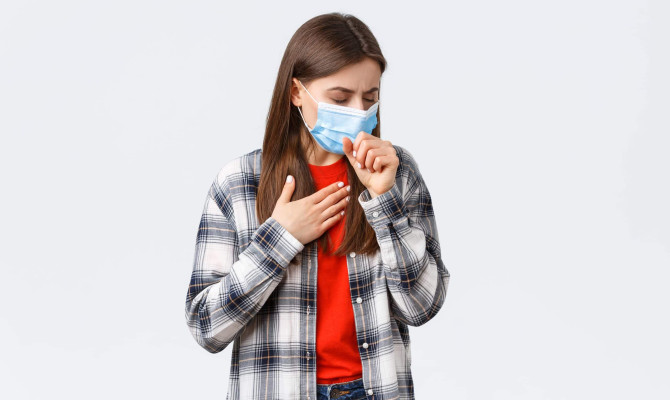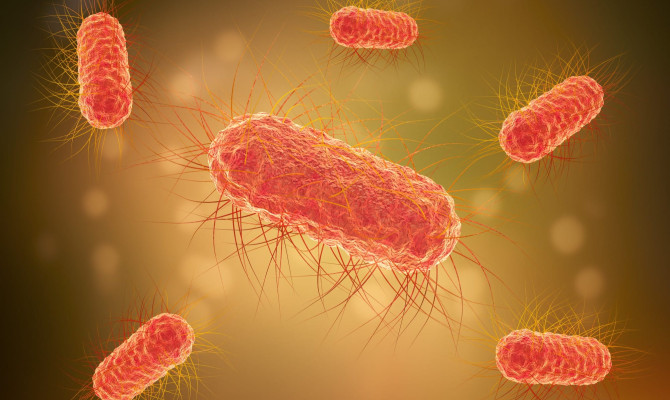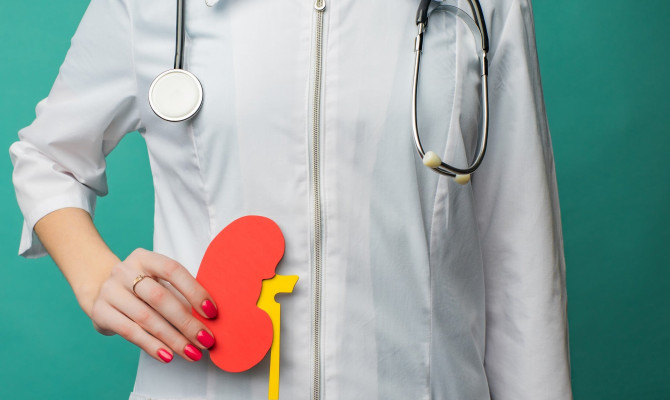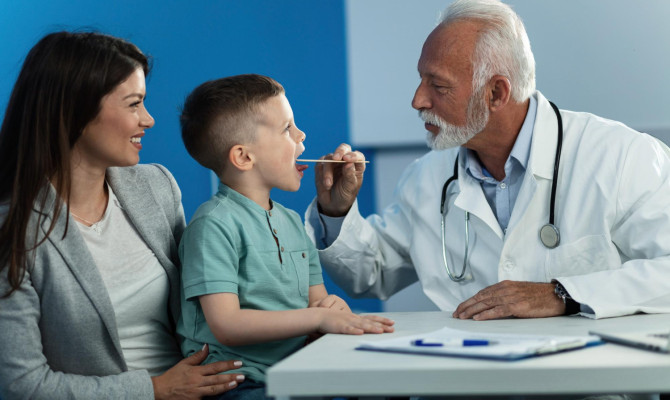Gallstones: Symptoms, Reasons and Management

- Gallstones
- 16 Aug 2023
Overview
What are gallstones ?
Gallstones are solid, beads like accumulations of material that commonly contain bilirubin or cholesterol and originate in the gallbladder.1Overview | Researched based study from Niddk.nih.gov
On the right side of the belly, beneath the liver, lies a little, pear-shaped organ known as the gallbladder. The gallbladder stores and excretes bile, a digestive fluid produced by the liver that aids in the small intestine’s breakdown of fats.
Gallstones come in many shapes and sizes, ranging from a single little stone to several big ones. They often contain bilirubin, a waste substance produced when red blood cells are broken down, or cholesterol.
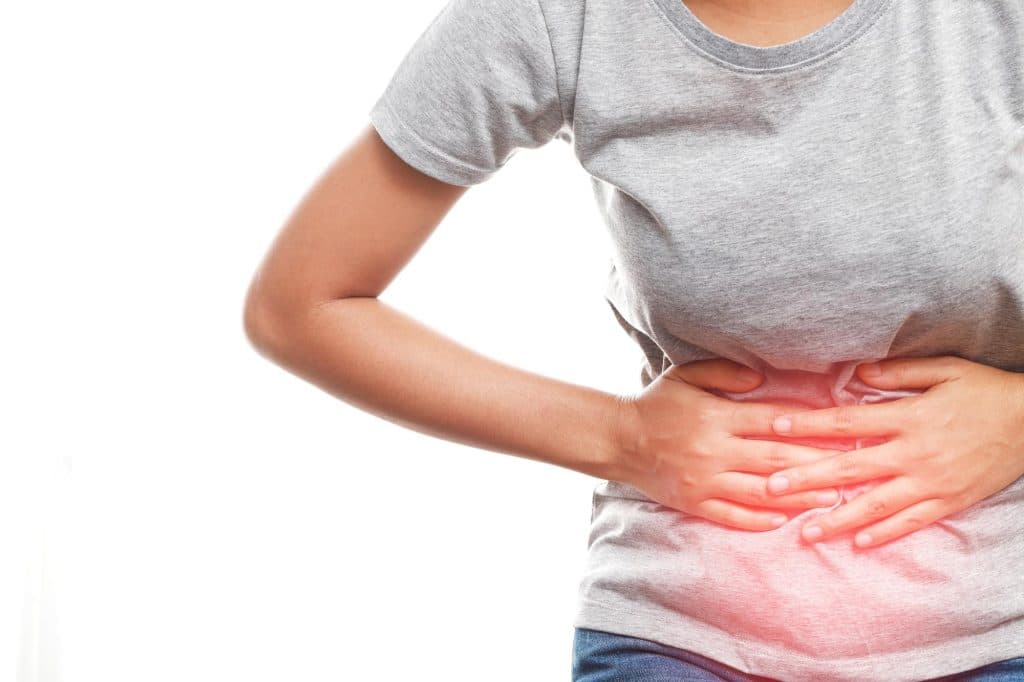
Types
Types of gallstones
Cholesterol stones
- With around 80% of instances, these are the most prevalent stones.
- They develop when there is an excess of cholesterol in the bile, which can happen when the gallbladder isn’t emptying correctly, or the liver creates too much of it.1Types | Researched based study from Niddk.nih.gov
Pigment stones
- These are less common and appear when the bile has an excessive amount of bilirubin. An unwanted byproduct of the breakdown of aged red blood cells is bilirubin.
- They are usually made up primarily of bilirubin and are tiny and black.
- They can also be divided into black and brown varieties.
- Black stones are typically detected in individuals with liver illness or blood disorders and are composed of bilirubin and other chemicals.
- People with a bacterial infection of the bile ducts are more likely to develop brown stones primarily formed of calcium salts.1Types | Researched based study from Niddk.nih.gov
Causes
What are the possible causes?
Genetics
- If there is a family history of gallstones, they are more prone to develop.2Causes | Researched based study from Niddk.nih.gov
Obesity
- Obesity or being overweight can raise the risk.
Rapid loss of weight
- Overly rapid weight loss can also increase the danger.
A diet rich in fat and cholesterol
- Consuming a diet heavy in cholesterol and fat can increase the risk.
Gender and age
- Gallstones are more common in women over the age of 40 than in men.
Pregnancy
- Pregnant women are particularly vulnerable because of hormonal changes and greater strain on the gallbladder.
Specific medical issues
- The risk can be increased by diseases like diabetes, liver disease, and Crohn’s disease.2Causes | Researched based study from Niddk.nih.gov
Medications
- Some medications, including those used to decrease cholesterol and birth control pills, can raise the risk.
Sedentary type of life
- Lack of exercise may make it more likely.2Causes | Researched based study from Niddk.nih.gov
Symptoms
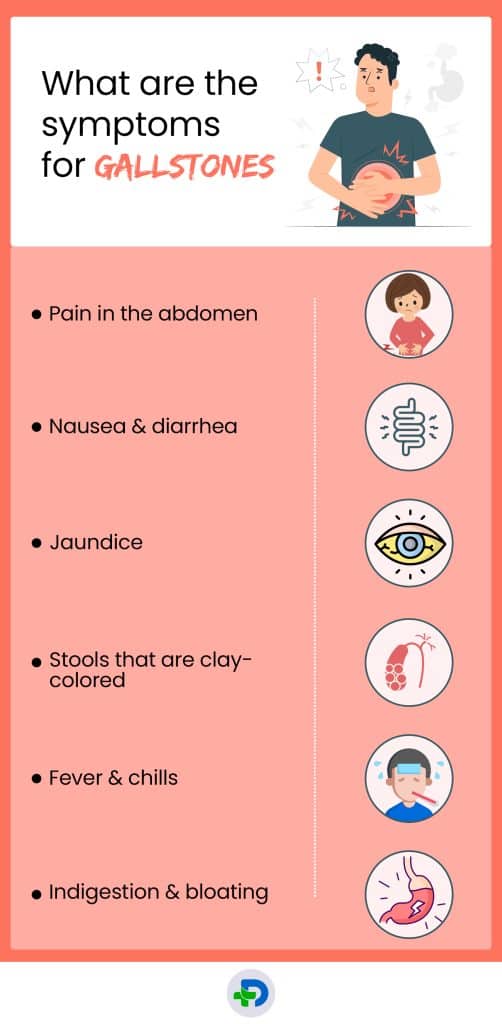
What are the symptoms?
Pain in the abdomen
- The most typical symptom is discomfort, typically felt in the center or upper right portion of the abdomen. The pain may be excruciating and continue for several hours.
Nausea and diarrhea
- Vomiting, nausea, and upset stomach are all possible for certain people.2Symptoms | Researched based study from Niddk.nih.gov
Jaundice
- A stone in the bile duct can block it, leading to jaundice, a disease in which the skin and whites of the eyes turn yellow.
Stools that are clay-colored
- The stools may turn white or clay-colored as a result of the stones.
Fever and chills
- This might occur if the gallbladder becomes infected.
Indigestion and bloating
- Additionally, some persons may have indigestion and gas.4Symptoms | Researched based study from Niddk.nih.gov
Vulnerability
Who is at risk?
Gender
- Compared to men, women are more likely to develop stones.
Age
- More typical in those who are over 40.
Rapid loss of weight
- Rapid weight loss can raise the danger.
Diet
- Consuming a diet heavy in cholesterol and fat can increase the risk.3
Medications
- Some medications, including birth control pills and those for lowering cholesterol, can raise the risk.
Lifestyle
- Lack of exercise or being overweight also increases the risk.3Vulnerability | Researched based study from Nhs.uk
Diagnosis
How are gallstones diagnosed?
Here are a few of the typical techniques:
Ultrasound
- Sound waves are used in a non-invasive ultrasound method to create pictures of the organs. The most typical diagnostic test is this one.
A blood test
- This can be done to assess liver function and look for indicators of infection or inflammation.5Diagnosis | Researched based study from Niddk.nih.gov
Scan
- A CT scan can produce an accurate image of the gallbladder and other organs.
Endoscopic retrograde cholangiopancreatography (ERCP)
- During this technique, the bile duct and gallbladder are inspected using a specialized scope with a camera. The stones can also be eliminated using it.
Magnetic resonance cholangiopancreatography (MRCP)
- Magnetic resonance imaging (MRI) is used in this non-invasive imaging process to obtain exact pictures.
Treatment
Treatment strategies
The degree, size, and number of the stones as well as the patient’s general health all have an impact on the treatment plan.
Observation
- The healthcare professional might advise monitoring only if the stones do not produce any symptoms.
Medications
- Small gallstones may be removed using this, or larger ones may have their symptoms lessened.4Treatment | Researched based study from Niddk.nih.gov
Surgery
A popular kind of treatment is cholecystectomy or gallbladder removal surgery. There are following types
Laparoscopic
- The most common type is this. It is a minimally invasive treatment that necessitates numerous tiny abdominal incisions. To view the gallbladder and the surrounding area, a laparoscope is inserted. Next, the gallbladder is taken out.4Treatment | Researched based study from Niddk.nih.gov
Open cholecystectomy
- Rarely could this procedure be required. To remove the gallbladder, a wider abdominal incision must be made. If there are difficulties or the gallbladder is challenging to remove laparoscopically, this type may be required.4Treatment | Researched based study from Niddk.nih.gov
Lithotripsy using shock waves
- Gallstones are broken up during this process using shock waves to expel them from the body quickly
- It is a comparatively less complicated process .
Post-operation
Post-operative care
Treatment of pain
- Following surgery, pain, and discomfort are frequent. Your doctor could prescribe painkillers for you or make suggestions for over-the-counter substitutes.
Activity
- Refraining from heavy lifting and intense exertion is vital for a few weeks after surgery.
Diet
- For a few weeks, eat a low-fat diet. This may facilitate better digestion and lessen discomfort.4Post-operation | Researched based study from Niddk.nih.gov
- Until your body has adjusted, your doctor may advise avoiding certain foods, such as fried or fatty foods.
Instructions as directed
- Follow the doctor’s wound care instructions and keep the incision area dry and clean.4Post-operation | Researched based study from Niddk.nih.gov
Follow-up consultations
- Your doctor will schedule follow-up appointments to keep an eye on your healing and make sure there are no problems.
Complications
What are the complications?
Colic pain
- When a gallstone gets stuck in one of the ducts that carry bile from the gallbladder, it causes this uncomfortable condition called colic pain.3Complications | Researched based study from Nhs.uk
Acute cholecystitis
- Inflammation arises when a stone obstructs the gall bladder.3Complications | Researched based study from Nhs.uk
Pancreatitis
- In some circumstances, the stone may obstruct the pancreatic duct, causing inflammation.
Cholangitis
- When the bile ducts become infected due to a blockage, a dangerous bacterial infection called this develops.
The gallbladder cancer
- While extremely unlikely, gallstones may increase the chance of getting cancer.3Complications | Researched based study from Nhs.uk
In addition to gallstone disease, one may also experience other diseases like metabolic syndrome, dyslipidemia, diabetes, and insulin resistance. Hence, extreme care should be taken.
Prevention
Preventive factors
Adopt healthy food habits
- Consuming a diet rich in fiber and low in fat is advised. Eat as much fruit, veggies, healthy grains, and lean proteins as possible.
Keep hydrated
- To avoid the formation of stones, drink plenty of water.
Regular exercise
- A healthy weight should be maintained.
Limit your alcohol consumption
- Keep your alcohol consumption moderate or less.
Consult your physician
- If you have a family history of gallstones or other risk factors, talk to your doctor about ways to reduce your risk.6Prevention | Researched based study from Nlm.nih.gov
Outlook
What’s the outlook?
- In general, the prognosis is favorable. Gallstones typically cause no problems and may not even require treatment. However, when it does, treatment is typically successful.
- Within a few weeks of surgery, most patients fully recover and can resume their regular activities.
- More thorough care is needed when difficulties arise because they could be fatal if neglected.7Outlook | Researched based study from Nlm.nih.gov
Any feedback on this article?
 This Articles content was accurate
This Articles content was accurate Very Informative Article
Very Informative Article I have a question or a comment
I have a question or a comment
 This article contains inaccurate content
This article contains inaccurate content This article was not helpful
This article was not helpful I have a question or a comment
I have a question or a comment
We appreciate your helpful feedback!
Checkout our social pages
References
-
National Institute of Diabetes and Digestive and Kidney Diseases
Definition & Facts for Gallstones | Overview | Types
-
National Institute of Diabetes and Digestive and Kidney Diseases
Gallstones | Symptoms | Causes
-
National Health Service
Gallstones-Overview | Complications | Risk
-
National Institute of Diabetes and Digestive and Kidney Diseases
Gallstones | Treatment
-
National Health Service
Gallstones | Diagnosis
-
National Library of Medicine
Gallstones (Cholelithiasis) | Prevention
-
National Library of Medicine
Gallstones: The thing in itself | Outlook














